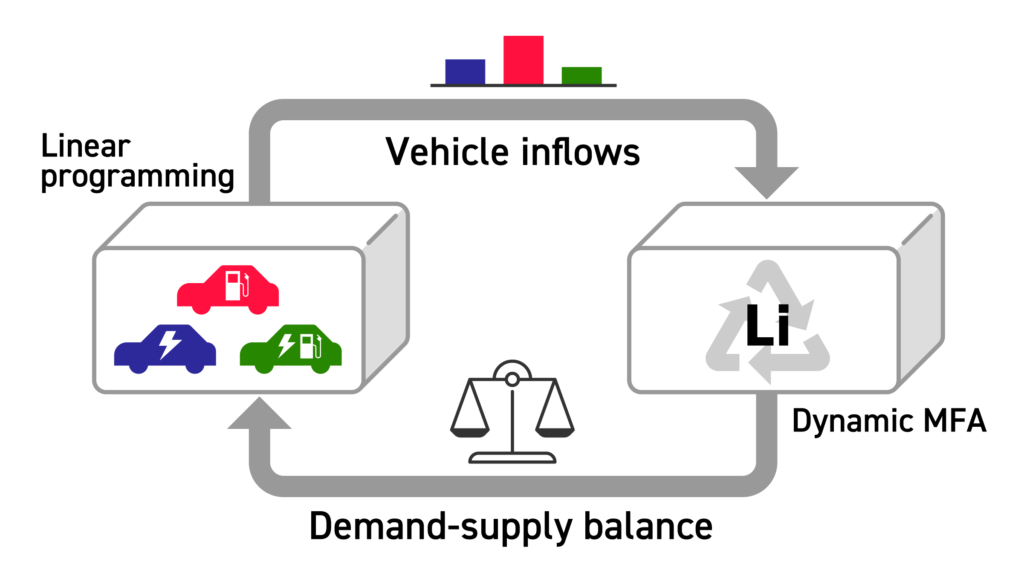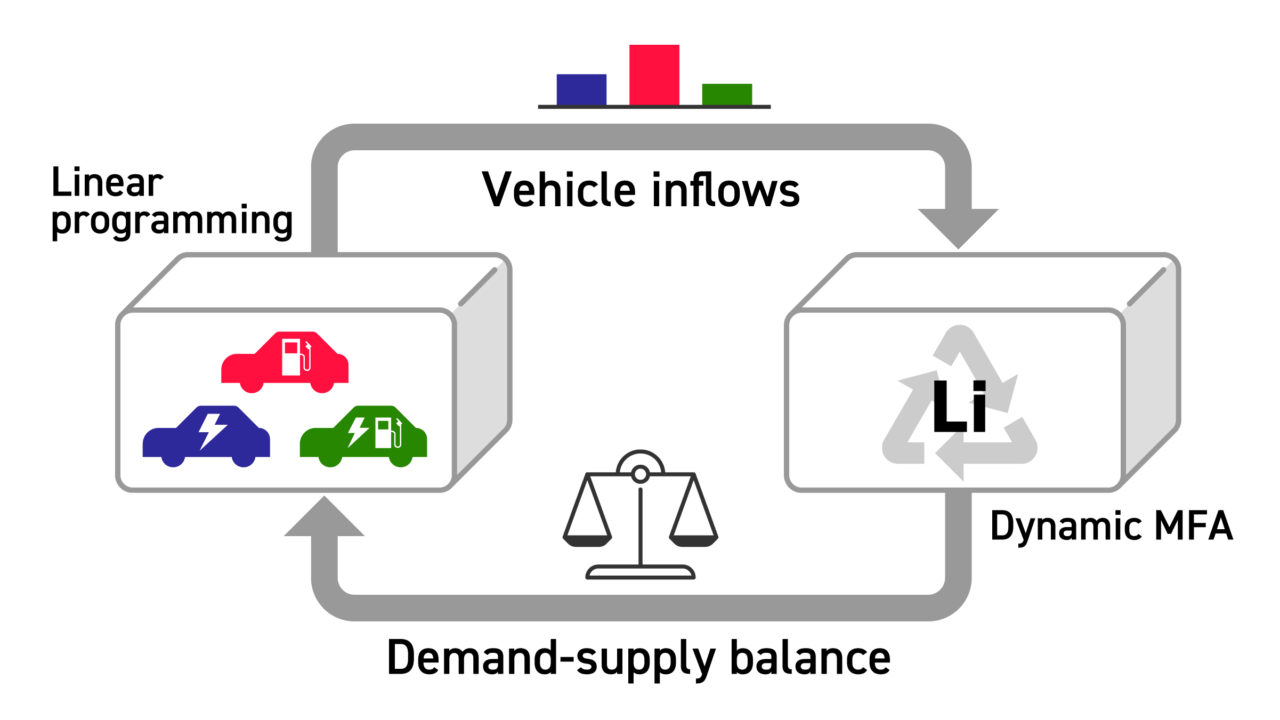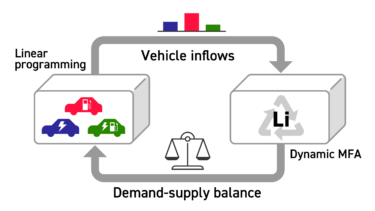
著者
Takuma Watari, Keisuke Nansai, Kenichi Nakajima, Benjamin McLellan, Elsa Dominish and Damien Giurco
掲載誌
Environmental Science and Technology, 2019, 53, 20, 11657-11665 ; Link
要旨
Electrification of the transport sector will support its decarbonization, yet significantly change material requirements. This calls for an integrated modeling approach internalizing metal demand-supply dynamics in low-carbon scenarios to support the Paris agreement on climate change and sustainable material circulation. Here we develop a step toward the integrated simulation of energy-materials scenarios by unifying a stock-flow dynamics model for low-carbon scenarios using linear programming. The modeling framework incorporates lithium supply from both mines and end-of-life (EoL) recycling for projected use in electric vehicles on a global basis. The results show that supply constraints, which could become apparent from around 2030 in the case of current recycling rates (<1%), would impede the deployment of battery electric vehicles (BEVs), leading to the generation of an additional 300 Mt-CO2 of emissions for vehicle operation in 2050. Another important finding is that increasing the recycling rate to 80% could substantially relieve restrictions on the introduction of BEVs without requiring primary supply from natural deposits far beyond historical rates of expansion. While EoL recycling is important from a long-term perspective, an EoL-oriented strategy has little effect on the short/medium-term (such as to 2030) lithium demand-supply balance because of exponential demand growth and long living batteries. Importantly, findings in this study emphasize the necessity of tackling climate change and resource circulation in an integrated manner.


